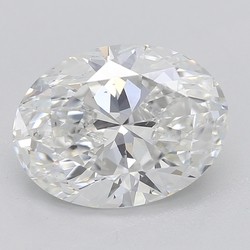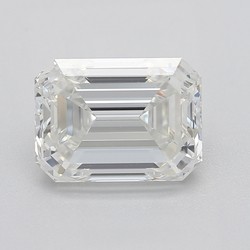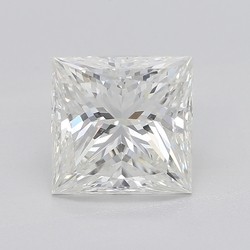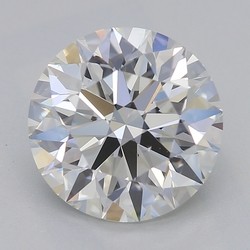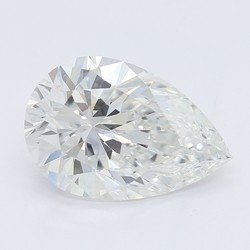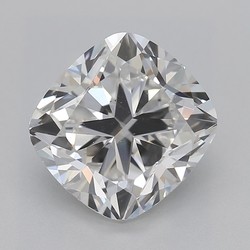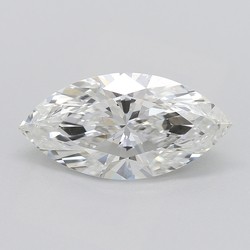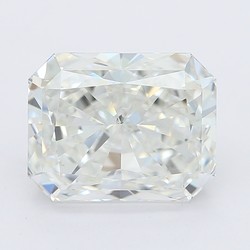Is Your Diamond Triple Excellent? Here’s What it Means and Why it Matters
Key Takeaways
- Triple Excellent diamonds are not a recognized category used by the GIA, which is why you won’t find any direct mention of ‘Triple X’ on a GIA report.
- Since only Round Brilliant diamonds receive a Cut grade (and other shapes are simply graded for Polish and Symmetry) only Round Brilliant diamonds can be considered Triple Excellent.
- Triple Excellence is not vital to you finding a beautiful and worthwhile diamond. True, Cut is the most important of the Four Cs for any shopper, since Cut is the most significant factor behind the diamond’s ability to sparkle, but that’s not to say that all three of these categories need to be graded ‘Excellent’.
- To the naked eye, ‘Very Good’ grade is perfectly okay for Polish, Cut, and Symmetry, and it’s a great way to save a little money on your diamond.
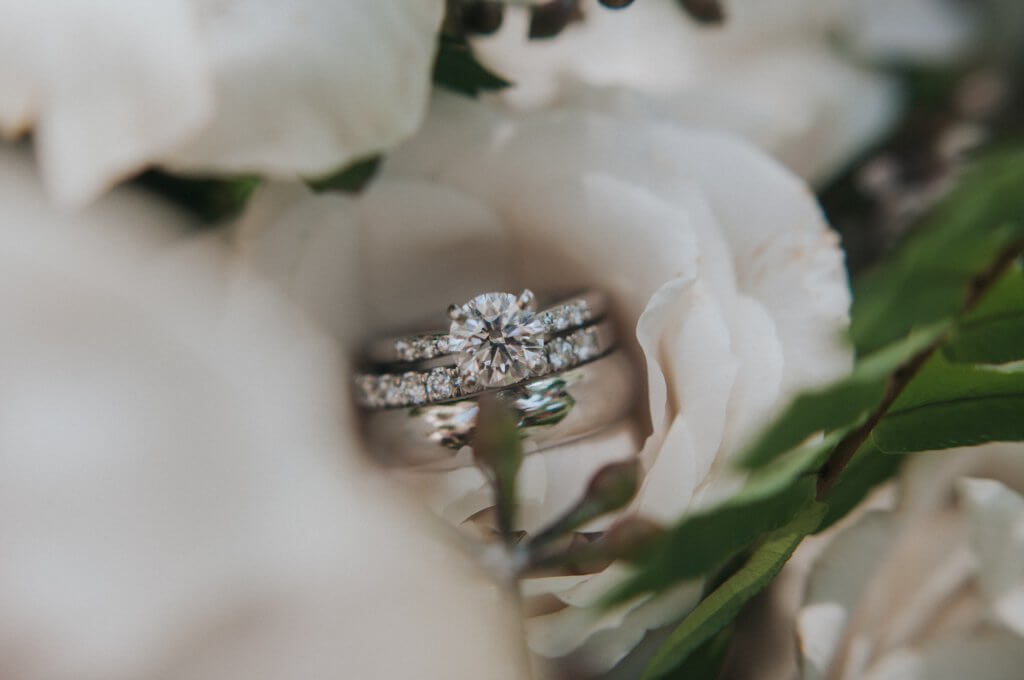
It’s no secret that a diamond’s cut is the key to its sparkle. Any prospective buyer will, for that reason alone, do well to limit their search to include only those diamonds that have been graded high in this category according to the GIA’s incredibly high standards.
As a result, you’ve probably already familiarised yourself with the GIA’s cut grades – and, hopefully, committed yourself to the Excellent and Very Good categories in order to guarantee high levels of brilliance, fire and scintillation. Doing so makes the process of finding a worthwhile diamond much easier.
Still, the world of well-cut diamonds is not quite as simple as that. There is another term that you will likely see attached to certain diamonds on the market, expressed either has ‘triple excellent’, ‘triple x’ or ‘GIA 3X diamonds’. While not an official grade on the GIA’s scale, it refers to the very best diamonds that pass through the GIA’s labs – although they may not represent the very best diamonds for you.
What is a triple X Diamond?
Put simply, 3X (or triple excellent) refers to Round diamonds that have been graded Excellent for cut, symmetry and polish. It is a term used by jewelers, not the GIA themselves.
In any GIA report, one of the first things that you will notice is the subcategories listed for these three features. Each one is, of course, graded in the exact same way that the overall Cut category is: from Excellent and Very Good (the only two grades we would recommend) through Good, Fair, and Poor.
When a Round diamond scores the top grade in every subcategory, it is referred to colloquially as triple excellent – or 3X – and, understandably, considered to represent a very high quality of diamond.
Remember, however, that as the GIA does not officially recognize this label, it is not something that you will see printed in your diamond’s GIA report. As a term, it’s far more likely to crop up in promotional materials for certain vendors and jewelry stores.
Cut
Perhaps the most important thing to note about the GIA’s approach to cut quality is the fact that they only provide an overall ‘Cut’ grade for Round diamonds. This is why you will only ever find Triple Excellent Round cut diamonds – rather than Pear, Oval or any other shape.
What is an Excellent Cut Grade?
According to the GIA, a diamond given an Excellent cut grade is very bright, and features a strong balance between light and dark areas within the stone. The facets are even and the reflections sharp.
While the finer points that mark the difference between an Excellent cut and a Very Good or Good cut are only going to be noticed by an experienced diamond grader or jeweler, you will find that plenty of differences stand out to you, even at the very start of your diamond-buying journey.

An Excellent cut grade does not ensure uniformity. Two diamonds placed side by side, both featuring a cut grade of Excellent, will still feature their own unique characteristics and patterns – although you can feel sure that both will be incredibly bright and crisp.
Symmetry
Diamond cutting is an incredibly complex process, and ensuring strong symmetry between each of the diamond’s 57 – 58 facets calls upon many years’ worth of skill and experience from the diamond cutter. Symmetry is important to a diamond’s brilliance and, like the Cut grade itself, should always be made a priority.
What is Excellent Symmetry in a Diamond?
A diamond with Excellent symmetry will feature facets that align perfectly at the girdle – for instance, the points of the pyramids on the crown will align with the points of the pyramids on the pavilion – a well-centred table, even shape and no additional facets.
Asymmetries can be glaringly obvious, or they can be just subtle enough that you may not notice them at first and second glance. Some asymmetries can be more obvious once the diamond is placed within its setting – and, even if you’re never able to detect them yourself, they can still alter the brilliance of the diamond and prevent it from sparkling as it otherwise should.
How Much Does Symmetry Matter in a Diamond?
Symmetry is central to the diamond’s brilliance, and only Excellent or Very Good grades should be considered. A lack of symmetry can impair a diamond’s ability to produce as much brilliance as you’d want it to.
If you’ve ever seen a rough (uncut) diamond, you’ll know that a diamond’s facets are the reason it sparkles the way it does. Without them – and, of course, without a high quality polish – diamond appears pretty dull and unassuming, particularly to those who have only ever encountered diamonds after they have been cut, polished and set within a beautiful ring.
These facets can’t just be placed wherever the cutter sees fit, however. Taking the time to figure out how to get the most symmetry out of a diamond is an essential step in diamond cutting and, for a buyer, checking for a high symmetry grade is an essential step in making a good investment.
Polish
After the cuts have been made, and the final shape of the diamond has been realised, the finishing step is to polish each of those facets, and to ensure the smoothest, glossiest surfaces possible for reflecting light.
What Does Diamond Polish Mean?
This refers to how smooth and ‘glassy’ each of the diamond’s facets are. GIA graders look for any slight flaws that may have been caused by this process.
While polishing will rarely cause any significant issues for a diamond, polishing can easily cause abrasions, scruff-marks and burns – among other things – that impact the appearance and sparkle of a diamond.
Still, as we mentioned, these surface defects typically remain relatively minor – and will look far worse in magnified images of the diamond than they do when you are looking at the stone in person, without magnification.
Symmetry is typically considered to be marginally more important to the diamond’s brilliance than polish, but it is important that you do not overlook the significance of a strong grade in this area, either.
Are Triple Excellent Diamonds More Expensive?
Yes, the prestige of a diamond that has been awarded top grades within each of these significant categories affords it a higher price from many vendors.
Why? Because it’s a lot quicker for shoppers to understand the selling point of these diamonds – the fact that they’re the best of the best, in terms of cut, polish and symmetry – than it is for them to research the importance of each of those categories, and which grades are worth considering.
This is the same reason why the very top clarity grades appeal to shoppers – because it takes a lot less time to figure out what is meant by ‘flawlessness’ than to figure out what is meant by ‘eye cleanliness’.
So, Should You Buy a Triple Excellent Diamond?
It’s not essential – and definitely not recommended if you pay the higher costs associated with triple excellent diamonds instead of investing into a more ‘well-rounded’ stone.
What do we mean by this? That even triple excellent diamonds can be afflicted by strong fluorescence, visible inclusions, or a tangible yellow color – and, if they are, Excellent grades across symmetry and polish won’t be enough to compensate for its flaws.
In order to be given an Excellent cut grade, a diamond does not need to be triple excellent. The GIA will still award Excellent cut grades to diamonds featuring ‘Very Good’ symmetry or polish, because of the fact that the differences between those top two grades are microscopic, and nowhere near significant enough to bring down the diamond’s overall appearance.
So why do triple excellent diamonds get so much attention? Because buyers with a limited understanding of the importance of each grade and feature will be reassured by the fact that these diamonds have been given ‘top grades’ across each category.
And, obviously, there is some merit to that. There’s nothing wrong with triple excellent diamonds, and they do guarantee a high level of quality in the most important of the Four Cs, but they are also given a much higher price because of that – a price that doesn’t necessarily need to be paid by anyone looking to purchase a beautiful and sparkly diamond.
Beautifully cut diamonds are more than worth the higher investment they require, but they don’t have to be triple excellent to tick all the boxes required to make a knock-out engagement ring.
At WillYou.Net, all of our Round diamonds feature cut grades of Very Good or Excellent, and you can click here to take a look at our substantial collection before going to see it at a trusted, local jewelry store.
